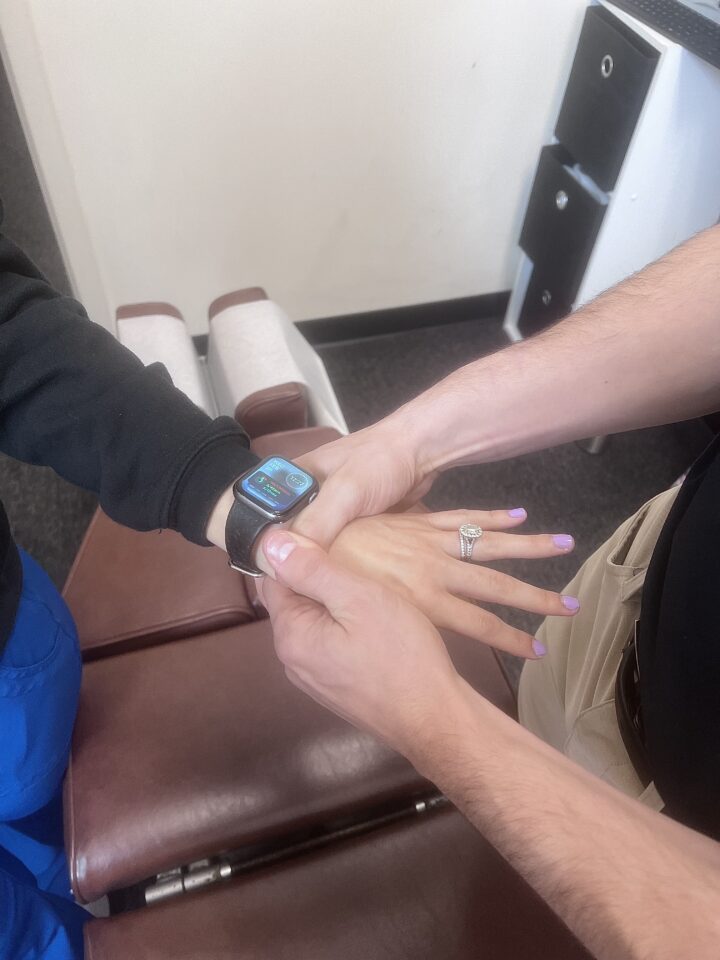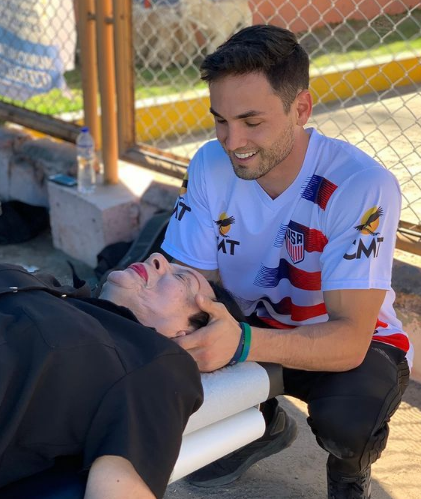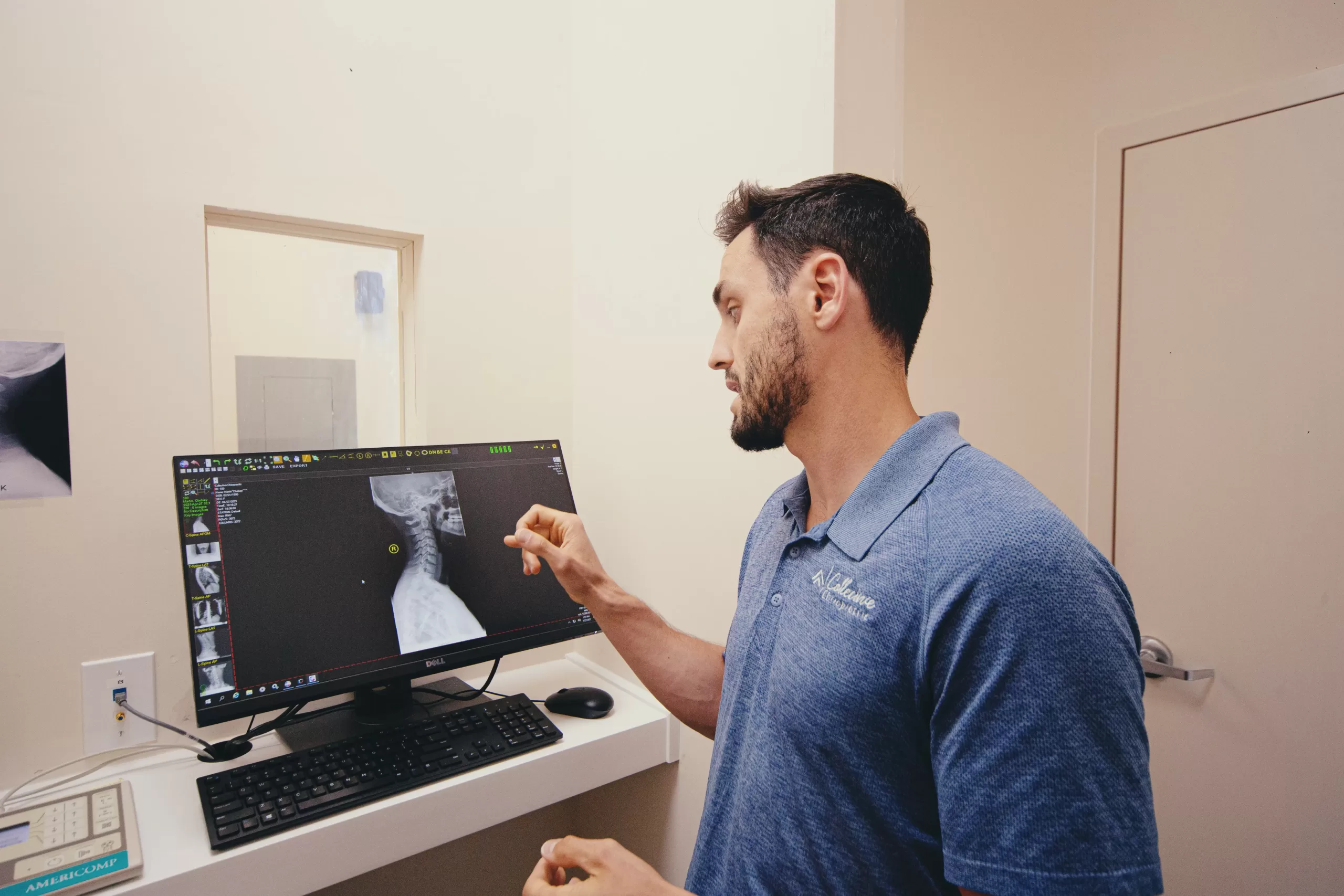What is Carpal Tunnel?
Carpal tunnel is a condition that affects many of us, whether it’s through work or hobbies. It occurs when the median nerve — located in the wrist — is compressed due to swelling of the tissues around it. This can cause tingling, burning, aching, and numbness in your hand and fingers. In some cases, carpal tunnel can be extremely painful and may require surgical treatment if not managed properly.
Carpal Tunnel Symptoms
The most common symptoms associated with carpal tunnel are numbness and pain in the thumb, index finger, middle finger, and half of the ring finger of one or both hands. Pain usually starts off as a dull ache before becoming more intense over time. Other signs of carpal tunnel such as weakness in your grip strength, difficulty making a fist, and decreased sensation in your hand can also be present.
To diagnose carpal tunnel syndrome, a doctor will run tests to check for nerve damage as well as rule out other conditions that may cause similar symptoms. Treatment options depend on the severity of the condition but typically involve physical therapy or surgery. Physical therapy is used to help reduce inflammation in the carpal tunnel wrist and strengthen the muscles around it while surgery is often necessary if more conservative treatments are not successful.
Living with carpal tunnel syndrome can be difficult but thankfully, there are many steps you can take to keep your wrists healthy and reduce your risk of developing this condition. These include taking frequent breaks from activities that put pressure on your wrists, wearing ergonomic equipment when typing or using the mouse, and stretching your wrists regularly to prevent stiffness. If you have already been diagnosed with carpal tunnel syndrome, make sure to take any medications prescribed by your doctor and practice recommended exercises to help reduce pain and improve flexibility.
Carpal tunnel can be incredibly painful and debilitating, but if it is caught early on, it can often be treated successfully with lifestyle modifications and medical interventions. It’s important to talk to a doctor if you are experiencing any of the symptoms mentioned above so that they can provide you with the best course of treatment for your specific needs. With proper care and management, you can stay active and lead a healthy life despite having carpal tunnel syndrome.
Types of Carpal Tunnel
Carpal Tunnel Syndrome
Carpal tunnel syndrome is a common condition that affects the wrist and hand. It occurs when the median nerve, which runs from the forearm to the palm of your hand, becomes compressed or squeezed at the wrist. This can cause numbness, tingling, weakness, burning sensation, and other symptoms in your fingers and thumb.
When carpal tunnel syndrome develops slowly over time, it’s called chronic carpal tunnel syndrome. When it comes on suddenly — usually due to an injury or illness — it’s called acute carpal tunnel syndrome.
One of the most common carpal tunnel syndrome symptoms is numbness or tingling in your hands or fingers. This numbness may come and go over time, but it’s usually worse at night. You may also feel a burning or prickling sensation in some parts of your hand and arm. Some people also experience pain in their forearm and wrist that can extend up to the shoulder.
Another common symptom of carpal tunnel syndrome is weakness in your hands or fingers. This can make it difficult for you to perform everyday tasks like typing on a computer, opening jars, or buttoning shirts with one hand.
If you think you might have carpal tunnel syndrome, visit your doctor as soon as possible. Your doctor will do a physical exam and check for swelling, tenderness, and other signs of carpal tunnel syndrome. They may also order tests such as an MRI or nerve conduction study to help diagnose the condition.
Treatment for carpal tunnel syndrome usually involves a combination of rest, splinting the wrist, and other carpal tunnel syndrome medication such as nonsteroidal anti-inflammatory drugs (NSAIDs) or corticosteroids. In some cases, surgery may be recommended to reduce pressure on the median nerve.
Carpal tunnel syndrome can be painful and make it difficult to do everyday tasks, but with proper treatment you can find relief from your symptoms. Talk to your doctor if you think you may have carpal tunnel syndrome so they can recommend the best carpal tunnel syndrome treatment plan for you.
Cubital Tunnel Syndrome
Cubital tunnel syndrome is a condition characterized by pain and numbness in the forearm, elbow, and hand. It occurs when the ulnar nerve – also known as the “funny bone” – becomes compressed or pinched as it passes through the cubital tunnel. Without appropriate treatment, this condition can cause weakness of the muscles in the hand that are controlled by this nerve.
The most common symptom of cubital tunnel syndrome is an aching or burning sensation felt around your elbow. You may also experience tingling or numbness in your ring finger and little finger, as well as reduced strength when moving these fingers. Other symptoms include clumsiness with fine motor tasks such as writing, buttoning clothing, or using scissors.
A doctor can diagnose cubital tunnel syndrome with a medical history, physical exam, and nerve conduction studies. During the physical exam, your doctor will ask you to move your fingers and elbow in different directions while they assess for any pain or numbness. Nerve conduction studies may also be ordered to measure how well the ulnar nerve is conducting signals to the muscles it controls.
Treatment for cubital tunnel syndrome depends on its severity. Mild cases may respond to simple measures such as avoiding activities that put pressure on the area or wearing a splint to keep the elbow in position during sleep. If these treatments are not sufficient, more invasive options such as corticosteroid injections or surgery may be
What Causes Carpal Tunnel?
Carpal tunnel is a painful and potentially disabling condition that affects the hands, wrists, and arms. It occurs when the median nerve in your wrist becomes compressed or irritated, leading to numbness, tingling, and pain in your hand and arm.
While anyone can develop carpal tunnel syndrome, it is especially common among those who work with their hands for long periods of time such as office workers, musicians, athletes, gardeners, assembly line workers and more.
The exact cause of carpal tunnel syndrome is often difficult to determine but there are several factors that may contribute to its development including:
- repetitive motions (such as typing)
- occupations requiring forceful hand movements (like construction work)
- obesity
- underlying health conditions like diabetes or arthritis
- genetics
Repetitive motions such as typing can cause carpal tunnel syndrome because they put pressure on the median nerve in your wrist. This pressure causes swelling around the nerve resulting in pain and sometimes numbness in your fingers.
Occupations that involve forceful hand movements like construction work can also contribute to this condition, as these jobs require you to make repeated bending, twisting and gripping motions with your hands which can put extra strain on the median nerve.
Being overweight or obese is another factor that can increase your risk of developing carpal tunnel syndrome as extra fat adds more pressure on the nerves in your wrists. Other underlying health conditions that may play a role include diabetes and rheumatoid arthritis, both of which can lead to nerve damage in your hands and wrists. Finally, genetics may also be a factor as it is believed that some people are simply more predisposed to developing carpal tunnel syndrome than others.
Regardless of the cause, carpal tunnel can be very uncomfortable and even debilitating if left untreated. If you think you may be suffering from this condition, consult with your doctor right away so they can provide an accurate diagnosis and prescribe the best treatment plan for you.

Carpal Tunnel Treatment
Carpal Tunnel Syndrome is a nerve disorder that affects the hands and wrists. It’s caused by pressure on the median nerve, which runs from your forearm into your palm. Symptoms include tingling, numbness, and pain in your fingers and palms. If left untreated, it can lead to further problems such as weakness in the hands or wrist.
Fortunately, there are several ways to treat Carpal Tunnel Syndrome. Here are some of them:
- Resting: Taking frequent breaks throughout the day can alleviate some of the pressure on your median nerve, providing carpal tunnel relief from symptoms. You may also opt for home remedies for carpal tunnel.
- Physical therapy: Through exercises like stretching and strengthening, physical therapy helps reduce inflammation in the carpal tunnel, relieving pain and other symptoms.
- Occupational therapy: Working with an occupational therapist can help you learn techniques to minimize strain on your hands and wrists during daily activities.
- Medication: Painkillers like ibuprofen or acetaminophen may make it easier for you to endure the pain associated with Carpal Tunnel Syndrome until more long-term solutions can be implemented.
- Surgery: In severe cases, carpal tunnel surgery may be necessary in order to fully alleviate pressure on the median nerve. The procedure involves cutting through a ligament that’s pressing on the nerve, allowing it to have more room so it won’t become compressed again.
- Chiropractic Care: Adjustments to the joints in the hands and wrists can help reduce inflammation, which will take pressure off of your median nerve.
By taking these steps, you can manage your Carpal Tunnel Syndrome and prevent it from becoming worse. So take a break, get some physical therapy, and make sure you’re taking the necessary precautions to keep your wrists and hands healthy!
Carpal Tunnel Exercises
Exercises for carpal tunnel are an effective treatment option for people suffering from carpal tunnel syndrome. These exercises can help to reduce the pain associated with carpal tunnel syndrome, as well as improve muscle strength and flexibility.
Here are a few examples of carpal tunnel exercises:
- Wrist Flexion and Extension Exercise – This exercise requires you to move your wrist up and down in a flexing motion. It is important to do this slowly and gently, aiming for 15 repetitions each time.
- Finger Abduction/Adduction Exercise – This exercise involves moving your fingers away from (abduction) or towards (adduction) the center of your hand. Start by holding your fingers straight outwards then move them inwards and outwards, repeating 15 times for each direction.
- Hand Squeezing Exercise – This exercise requires you to squeeze a soft object, such as a ball or a stress toy, for 10-15 seconds. Slowly release the grip of your hand after counting up to five and then repeat this process 10 times.
- Wrist Circling Exercise – Start by extending your arm in front of you with your palm facing downwards and make small circular motions with your wrist. Complete this motion 10-15 times clockwise, followed by 10-15 counterclockwise repetitions.
These carpal tunnel exercises are just a few examples that can help to alleviate pain associated with carpal tunnel syndrome. It is important to always listen to what your body is telling you and stop if any pain occurs during these exercises. Before attempting any of the above exercises or beginning carpal tunnel treatment, it is important to consult with your doctor or physical therapist first.
Benefits of Chiropractic Care in Treating Carpal Tunnel
Carpal tunnel is a common and painful condition that affects many people in the modern world. Driven by long hours spent typing or repetitive hand motions, Carpal tunnel can cause intense pain, numbness, and tingling in the wrists and hands.
Fortunately, there are steps you can take to address Carpal tunnel symptoms. One of those steps is seeking chiropractic care. Here’s why it could be beneficial:
- Increased Mobility: Chiropractors will work to improve your range of motion through manipulation of the joints and soft tissues surrounding them. This, in turn, can help reduce inflammation and ease the strain on your wrist muscles which causes the sensation of pain associated with Carpal tunnel.
- Pain Relief: Due to the increased mobility, regular visits to a chiropractor can help reduce pain associated with carpal tunnel. This is accomplished through improved circulation in the area and by providing your body an opportunity to heal itself naturally.
- Reduced Stress: When it comes to Carpal tunnel, stress relief is key! Chiropractors are trained to not only improve physical movement but also address mental health needs such as dealing with stress or anxiety that may be contributing to your condition.
- Better Posture: Poor posture can often contribute to Carpal tunnel symptoms and stopping them before they start is essential for preventing further damage and discomfort from setting in. By seeing a chiropractor regularly, they can help address your posture and make sure it is optimized for the best possible results.
Together, seeing a carpal tunnel chiropractor to treat carpal tunnel can be an effective way of dealing with the condition. In addition to relieving pain, it can also improve mobility, reduce stress, and promote improved posture. Talk to us today to learn more ways on how to relieve carpal tunnel pain.
Carpal tunnel is a common and painful condition that affects many people in the modern world. Driven by long hours spent typing or repetitive hand motions, Carpal tunnel can cause intense pain, numbness, and tingling in the wrists and hands.
Fortunately, there are steps you can take to address Carpal tunnel symptoms. One of those steps is seeking chiropractic care. Here’s why it could be beneficial:
- Increased Mobility: Chiropractors will work to improve your range of motion through manipulation of the joints and soft tissues surrounding them. This, in turn, can help reduce inflammation and ease the strain on your wrist muscles which causes the sensation of pain associated with Carpal tunnel.
- Pain Relief: Due to the increased mobility, regular visits to a chiropractor can help reduce pain associated with carpal tunnel. This is accomplished through improved circulation in the area and by providing your body an opportunity to heal itself naturally.
- Reduced Stress: When it comes to Carpal tunnel, stress relief is key! Chiropractors are trained to not only improve physical movement but also address mental health needs such as dealing with stress or anxiety that may be contributing to your condition.
- Better Posture: Poor posture can often contribute to Carpal tunnel symptoms and stopping them before they start is essential for preventing further damage and discomfort from setting in. By seeing a chiropractor regularly, they can help address your posture and make sure it is optimized for the best possible results.
Together, seeing a carpal tunnel chiropractor to treat carpal tunnel can be an effective way of dealing with the condition. In addition to relieving pain, it can also improve mobility, reduce stress, and promote improved posture. Talk to us today to learn more ways on how to relieve carpal tunnel pain.
Tired of Having Carpal Tunnel Stop You From Doing Your Best? Get Relief Now With Our Chiropractor!
Carpal tunnel can cause great pain and discomfort in your wrists and hands, but with the help of our highly trained chiropractor, you can get the relief you need. At Collective Chiropractic, our chiropractor will assess your pain and develop a specialized treatment plan that is tailored specifically to you.
Don’t let it keep you from living the life you want to live. Take action now and call our carpal tunnel chiropractor today!



